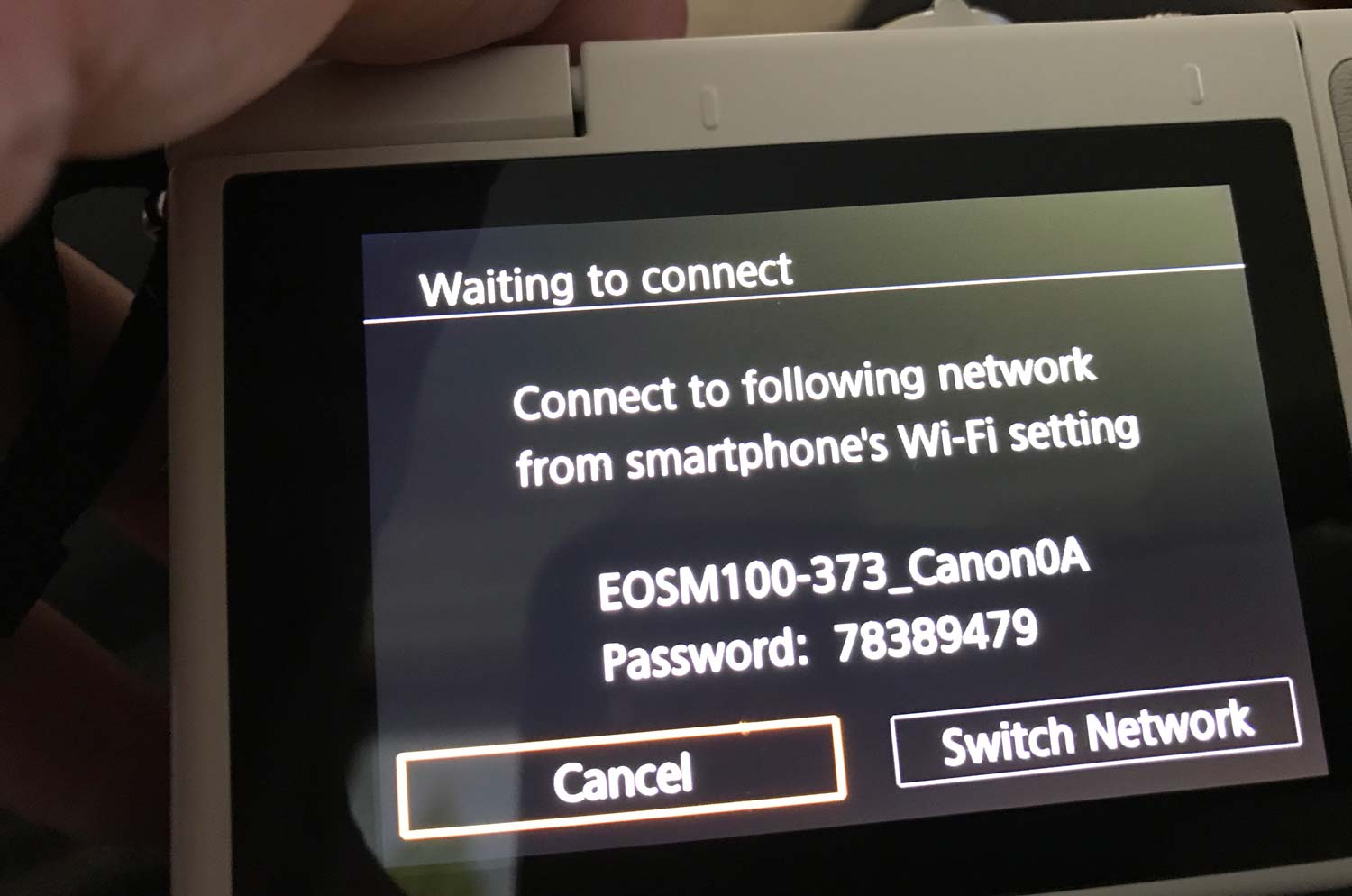Tom's Guide Verdict
Canon's mirrorless camera for beginners works well and is easy to use, but it has some limitations.
Pros
- +
Variety of intuitive scene modes and settings
- +
Lightweight and easy to use
- +
Very good in low light and challenging lighting situations
- +
Responsive swiveling touch-screen LCD
- +
Relatively inexpensive
Cons
- -
No electronic viewfinder
- -
Lacks 4K video
- -
No hot shoe for external flash
- -
Smaller lens selection than what other mirrorless cameras offer
Why you can trust Tom's Guide
The 24-megapixel Canon EOS M100 mirrorless camera is made for novices who yearn to capture more professional-looking shots or video than they can using a smartphone or a point-and-shoot, but find most advanced cameras intimidating. Overall, the Canon EOS M100 ($600) produced very good still photos and video, even in low light. It also includes intuitive ways to get creative, either while shooting, or by editing the photos you shot, in-camera. While it lacks some features that will help you grow as a photographer, the EOS M100 is an inexpensive choice if you're looking to ease into a mirrorless camera.
Design, Controls and Features
The EOS M100 measures approximately 4.3 x 2.6 x 1.4 inches and is about 9.4 ounces, making it smaller, more compact and more lightweight than the Sony a6000, which weighs 10.05 ounces and measures 4.72 x 2.63 x 1.78 inches.
However, that convenience comes at a price. You'll find fewer knobs and physical controls on the exterior of the M100 than you will on other mirrorless cameras, like the a6000. That means you'll need to find the settings you want by hunting around in the menu system. However, Canon's done a decent job at making the interface fairly intuitive.

The M100 lacks an electronic viewfinder, which made it more difficult to compose an image or a video. Canon partially makes up for it by including a clear, sharp and responsive 3-inch touch-screen LCD. One nice LCD feature is that you can use the touch screen to snap or focus your photos by touching the display.

The LCD does swivel, letting you to angle it if you want to shoot and minimize some glare. But the LCD swings only one way, upward to 180 degrees, which allows you to shoot selfies. In fact, there's even a selfie scene mode.
One nice feature is that you can use the touch screen to snap or focus your photos by touching the display.

Unfortunately, you can't angle the LCD downward, which means you can't hold it over your head and shoot from above or minimize reflections by angling the display downward.
Image Quality and Performance
The 24-megapixel EOS M100 includes a large, APS-C image sensor, which is the same as in many of its DSLRs. Overall, the sensor and the EF-M 15-45mm f/3.5-6.3 IS STM kit lens (two of the most important factors that determine image quality on any camera) worked well in many lighting scenarios: Whether I shot landscapes in brightly lit rural settings, portraits on a wintry night backlit with holiday lights, or subjects in motion, the M100 did a fine job of capturing detail and dynamic range.

The M100 can capture full-HD-resolution video at 60p or 30p, but doesn't include 4K video, as with Sony a6300 and a6500. Although images get noisy at the top ISO of 25,600, they're mostly noise-free, even at the second-highest ISO, 12,800 (although you will notice a slight increase in finer grain, which will obscure very fine details). Overall, most entry-level novices will be quite happy with the image quality using almost any ISO setting.

One tool aimed at novice shooters is the Creative Assist mode, which lets you adjust a slider to increase or decrease the amount of background blur in a shot. In effect, it'’s accomplishing the same thing by adjusting the depth-of-field range, but avoiding the technical jargon.
MORE: Best DSLR Cameras From Beginner to Pro
Another nice feature, useful for shooting sharp still photos and video, is Canon's Dual Pixel AF technology, which you'll find in pricier DSLRs such as the EOS 80D.

As should be expected, the M100 does a superb job in bright light. It captured excellent detail, and color fidelity was very good, as hues were accurate and vibrant. The dynamic range was decent, but there could have been more differentiation in the dark tones.

My low-light test shot, which included various color swatches, textured fine-art images, a grayscale painting and still-life objects, found the M100 did a decent job capturing still life, although highlights were not prominent. The low-light setting did produce some noise, and the shadows also swallowed up some detail in the image. But overall, much of that could be recovered with a bit of image editing. In general, tonal values were solid, and colors were accurate.

I was a bit surprised by a bit of purple fringing in some landscape photos, where tree branches displayed a slight purple tone, which is known as chromatic aberration. But it's generally a hallmark of lower quality lenses. My guess is that although this kit lens does a good job in many circumstances, it can't overcome all problems. Better-quality Canon mirrorless lenses may show little, if any, chromatic aberration or purple fringing.


The M100 did an adequate job of capturing bursts of JPEGs or combinations of JPEGs and RAW files, but did so at between 4 (without autofocus lock) or 6 (with autofocus lock) frames per second (fps). The a6000 can shoot bursts of photos at twice that speed, which can be handy when shooting sports scenes or when your subjects are in motion and you want to be sure to capture just the right moment.
Video Quality
Some photographers may steer clear of the M100 camera simply because it doesn't shoot in 4K resolution. But it does give you the option of shooting 1080p video clips at either 30 or 60 fps, with the latter providing a somewhat smoother frame rate. In my tests, I found the M100 took video clips that were clear and crisp.
MORE: DSLR vs. Mirrorless Cameras: Which Is Better for You?
The EOS M100 had some trouble adjusting to changes in lighting (like moving from indoors to outdoors). But I did find a workaround: If you change the metering from evaluative metering (which determines the exposure by considering the entire frame of the photo) to center-weighted average metering (which selects a smaller area), the change in exposure occurs more quickly.
Overall, I also found the dual-pixel AF to work well in bright light and in low light. It did a good job of keeping focus for moving objects (like cars moving toward you), and adjusting from still objects and back to moving objects.
Some photographers may steer clear of the M100 camera simply because it doesn't shoot 4K video.
When panning the camera from left to right or right to left, the video's image stabilization functioned adequately. Like most of Canon's interchangeable-lens cameras, the M100 has a lens-based optical image stabilization system, which means the stabilizer is located in the lens. Thus far, most of the new M-series Canon lenses, including the 15-45mm lens I used for testing, have a built-in optical stabilizer. In addition, Canon adds 3-axis digital IS as well, although it's for video capture and not still photos. It's meant to compensate for any handshake, which can result in jittery video footage.
In very low light (such as this video of a snow falling on a dark winter's night), the M100 did surprisingly well. There was some noise, which is to be expected, but overall the camera was able to quickly focus on the details of snowflakes falling by a street light, even when I zoomed in or out of the scene. In such settings, even full-size camcorders can sometimes struggle. But the dual-pixel AF performed very well here. Audio quality also sounded good on this Canon.
Wireless Sharing
Since the M100 includes wireless capabilities, you can connect it to your smartphone or wireless device using the Camera Connect mobile app, which was relatively easy to set up via Bluetooth. Once connected, I could use the Remove live-view shooting mode (which required me to connect via Wi-Fi): This allowed me to compose my image on my smartphone and then fire off photos as well as change other settings, such as the ISO and drive mode/self-timer mode.

An alternate method of operating the camera is by using the Bluetooth remote controller function. This lets you snap a photo or begin (and end) capturing a video, but without the live-view preview. Both are handy, although they don't include many shooting or setting options.

I could also easily transfer images from my camera to my phone or other mobile device. You can then upload them to social media, like Facebook and Twitter, via your phone. Overall, I found the app connected quickly and worked pretty well.
Battery Life
Canon claims that the EOS M100 can shoot about 295 shots in normal mode (according to the CIPA standard), which is a bit lower than you'll get with the Sony a6000. But you can improve that by using Canon's Eco Mode, which boosts it to 410 shots. For shooting video, the M100 can shoot 80 minutes, or for continuous shooting, about 125 minutes.
Lenses
Because Canon was a late entry into the mirrorless market, it has fewer available lenses than does Sony for its cameras, although this will undoubtedly change over time.
MORE: Camera Recommendations for All Kinds of Photographers
If you happen to own a variety of Canon DSLR EF or EF-S lenses, you can buy a mount adapter, which Canon says will make the lenses fully compatible with the M100 (or other M-series cameras), including its image stabilization and autofocus features. However, the small footprint of this model would make it difficult to hold and balance some of the very long and heavy DSLR lenses.
Bottom Line
The Canon EOS M100 is definitely targeted at those who've never used an advanced camera or perhaps even a point-and-shoot before. For those people, this mirrorless camera is an attractive choice if you're looking to step up the quality of your photos and video. But without an electronic viewfinder or hot shoe (for an external flash), as well as other advanced features found on competing advanced cameras, like the Sony a6000, your ability to fully grow with this camera will be limited. Overall, though, the EOS M110 is a relatively inexpensive, lightweight, easy-to-use and fun mirrorless camera.
Browse through our Canon promo codes for the latest offers and ways to save on your purchase.
Credit: Terry Sullivan/Tom's Guide
Terry Sullivan is an experienced technology journalist who has covered consumer electronics including cameras, smartphones, audio tech and software among many other things. His work has appeared in the likes of Consumer Reports, PCMag, Lifehacker, and the New York Times and he is also a teacher, photographer, artist, and musician.

